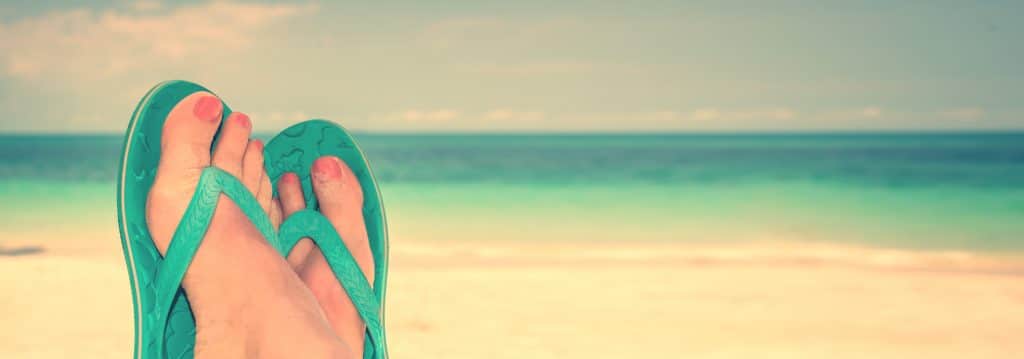Is It Time to Ditch the Flip Flops for Good?
If you’re like many (if not most) people, both of the following phrases are highly likely to be true:

- You’ve been told that flip flops aren’t exactly good for your feet.
- You own at least one pair of flip flops and wear them at least occasionally.
Why Flip Flops Are Bad for Your Feet
Let’s put it this way. When we recommend just about any pair of footwear—sandals or otherwise—we typically point out the importance of things like arch support, heel cushioning, shock absorption, and a proper fit that prevents the shoe or sandal from flopping or sliding around on your foot. Flip flops do exactly none of these things well. Actually, it’s worse than that. It’s not even that they do them badly. They barely do them at all.- No arch or ankle support. Flip flops let your feet pronate and flatten as far as they possibly can. For the vast majority of foot types, that’s a problem. It can lead to pain just about everywhere along your sole—heels, arches, ball, toes, the works.
- No heel cushioning or shock absorption. You’re getting the full force of your own bodyweight with every step. Almost nothing gets soaked up by the flip flops. Aches and pains start setting in a lot more quickly.
- Altered biomechanics. Wearing flip flops forces you to completely alter the way your body moves when you walk. You have to take shorter steps, your calves have to work overtime, and your toes have to dig in extra hard just to keep the flip-flop from flipping or flopping right off your feet. The increased strain from bad biomechanics adds to injury risk and cause pain all the way up your legs and lower back.
- Minimum protection. Like all open-toed footwear, flip flops offer only partial protection from underfoot obstacles, and almost no protection from blunt force traumas.
Are Flip Flops Actually Good for Anything?
They’re cute! And cheap! In all seriousness, flip flops do offer some protection from cuts, scrapes, and various fungal and viral infections—think warts, athlete’s foot or fungal toenails. If you happen to be relaxing on the beach or walking around a pool, locker room, or public shower/bathroom facilities, you are much better off in a pair of flip flops than you are barefoot. Note that there’s nothing special about flip flops in this regard. In just about any instance where flip flops would be preferred over going barefoot, you could do even better by opting for a more robust pair of sandals. Many popular shoemakers make fashionable sandals that are easy to slip on, but also offer a lot more cushioning, contoured arch support, and stability than your standard drugstore flip flops.
